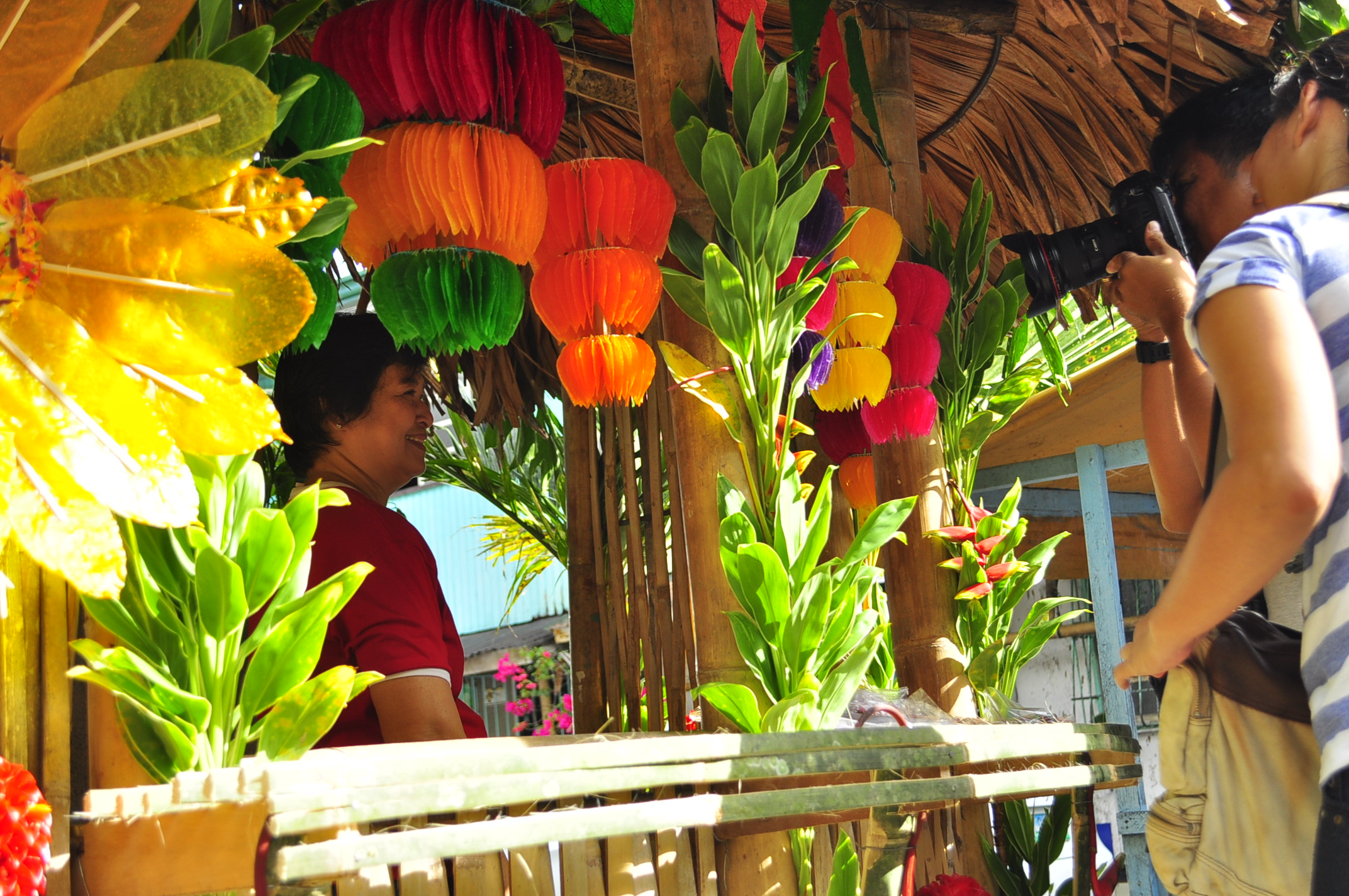Kiping on:
[Wikipedia]
[Google]
[Amazon]
Kiping is a traditional Filipino leaf-shaped wafer made from
 Kiping is characteristically leaf-shaped. It is made with molds made from real leaves of various plants that are non-toxic and do not have unusual tastes. The most commonly used are leaves from the kabal tree, '' Fagraea racemosa''. Other plants used include
Kiping is characteristically leaf-shaped. It is made with molds made from real leaves of various plants that are non-toxic and do not have unusual tastes. The most commonly used are leaves from the kabal tree, '' Fagraea racemosa''. Other plants used include
glutinous rice
Glutinous rice ('' Oryza sativa var. glutinosa''; also called sticky rice, sweet rice or waxy rice) is a type of rice grown mainly in Southeast and East Asia, and the northeastern regions of South Asia, which has opaque grains, very low amyl ...
. It originates from the city of Lucban
Lucban, officially the Municipality of Lucban ( tgl, Bayan ng Lukban), is a 2nd class municipality of the Philippines, municipality in the Philippine Province, province of Quezon, Philippines. According to the 2020 census, it has a population o ...
, Quezon
Quezon, officially the Province of Quezon ( tl, Lalawigan ng Quezon), is a province in the Philippines located in the Calabarzon region on Luzon. Kalilayan was the first known name of the province. It was later renamed Tayabas. In honor of the ...
. It is celebrated annually in the Pahiyas Festival
Lucban, officially the Municipality of Lucban ( tgl, Bayan ng Lukban), is a 2nd class municipality in the province of Quezon, Philippines. According to the 2020 census, it has a population of 53,091 people.
Lucban is dubbed as the Art Capital, ...
. It can be eaten grilled or fried and can be dipped in sugar, vinegar, or other sauces.
Etymology
The name ''kiping'' is an alternate form of ''kinipi'', meaning "pressed", from the verb ''kipi'', "to press dough to squeeze out the water".Description
 Kiping is characteristically leaf-shaped. It is made with molds made from real leaves of various plants that are non-toxic and do not have unusual tastes. The most commonly used are leaves from the kabal tree, '' Fagraea racemosa''. Other plants used include
Kiping is characteristically leaf-shaped. It is made with molds made from real leaves of various plants that are non-toxic and do not have unusual tastes. The most commonly used are leaves from the kabal tree, '' Fagraea racemosa''. Other plants used include coffee
Coffee is a drink prepared from roasted coffee beans. Darkly colored, bitter, and slightly acidic, coffee has a stimulating effect on humans, primarily due to its caffeine content. It is the most popular hot drink in the world.
Seeds of ...
, talisay (''Terminalia catappa
''Terminalia catappa'' is a large tropical tree in the leadwood tree family, Combretaceae, native to Asia, Australia, the Pacific, Madagascar and Seychelles. Common names in English include country almond, Indian almond, Malabar almond, sea almon ...
''), cacao, antipolo ('' Artocarpus blancoi''), and saba banana
Saba banana (pron. or ), is a triploid hybrid (ABB) banana cultivar originating from the Philippines. It is primarily a cooking banana, though it can also be eaten raw. It is one of the most important banana varieties in Philippine cuisine. I ...
.
The rice paste is made from glutinous rice
Glutinous rice ('' Oryza sativa var. glutinosa''; also called sticky rice, sweet rice or waxy rice) is a type of rice grown mainly in Southeast and East Asia, and the northeastern regions of South Asia, which has opaque grains, very low amyl ...
(usually older harvests) that have been soaked for a few hours before being ground into a paste. It is mixed with water, a little bit of coarse salt, and various food dyes. The paste is then spread on the chosen leaf molds and steamed
Steaming is a method of cooking using steam. This is often done with a food steamer, a kitchen appliance made specifically to cook food with steam, but food can also be steamed in a wok. In the American southwest, steam pits used for cooking hav ...
for around half an hour. After steaming, the leaves are then air-dried in shade and peeled off. They are piled on top of each other and weighted down for half a day. They are then separated and dried again, then again compressed under a weight for another half day. They are traditionally hung on strings for storage. There is a traditional superstition that in order to prevent the kiping from cracking, silence must be observed during the entire preparation.
Kiping is usually eaten grilled or fried. It can be dipped in sugar or vinegar or other kinds of dips. Kiping can also be used as decorations, especially during the Pahiyas Festival
Lucban, officially the Municipality of Lucban ( tgl, Bayan ng Lukban), is a 2nd class municipality in the province of Quezon, Philippines. According to the 2020 census, it has a population of 53,091 people.
Lucban is dubbed as the Art Capital, ...
, where bundles of kiping are shaped into colorful chandeliers (called ''arangya''), giant flowers, and other ornaments. These are used to decorate individual houses which are then judged by festival organizers.
Similar dishes
Kiping is also another name for kabkab, a similarcassava
''Manihot esculenta'', commonly called cassava (), manioc, or yuca (among numerous regional names), is a woody shrub of the spurge family, Euphorbiaceae, native to South America. Although a perennial plant, cassava is extensively cultivated ...
-based wafer from other parts of the country.
See also
*Aparon
Aparon are Filipino wafers drizzled with caramelized sugar and optionally, sesame seeds. They are uniquely made from unconsecrated ''hostia'' (communion wafers). They were first manufactured by a religious order who baked communion wafers for th ...
* Barquillos
* Krupuk
* Kropek
References
{{Flatbreads Philippine desserts Rice dishes Philippine rice dishes